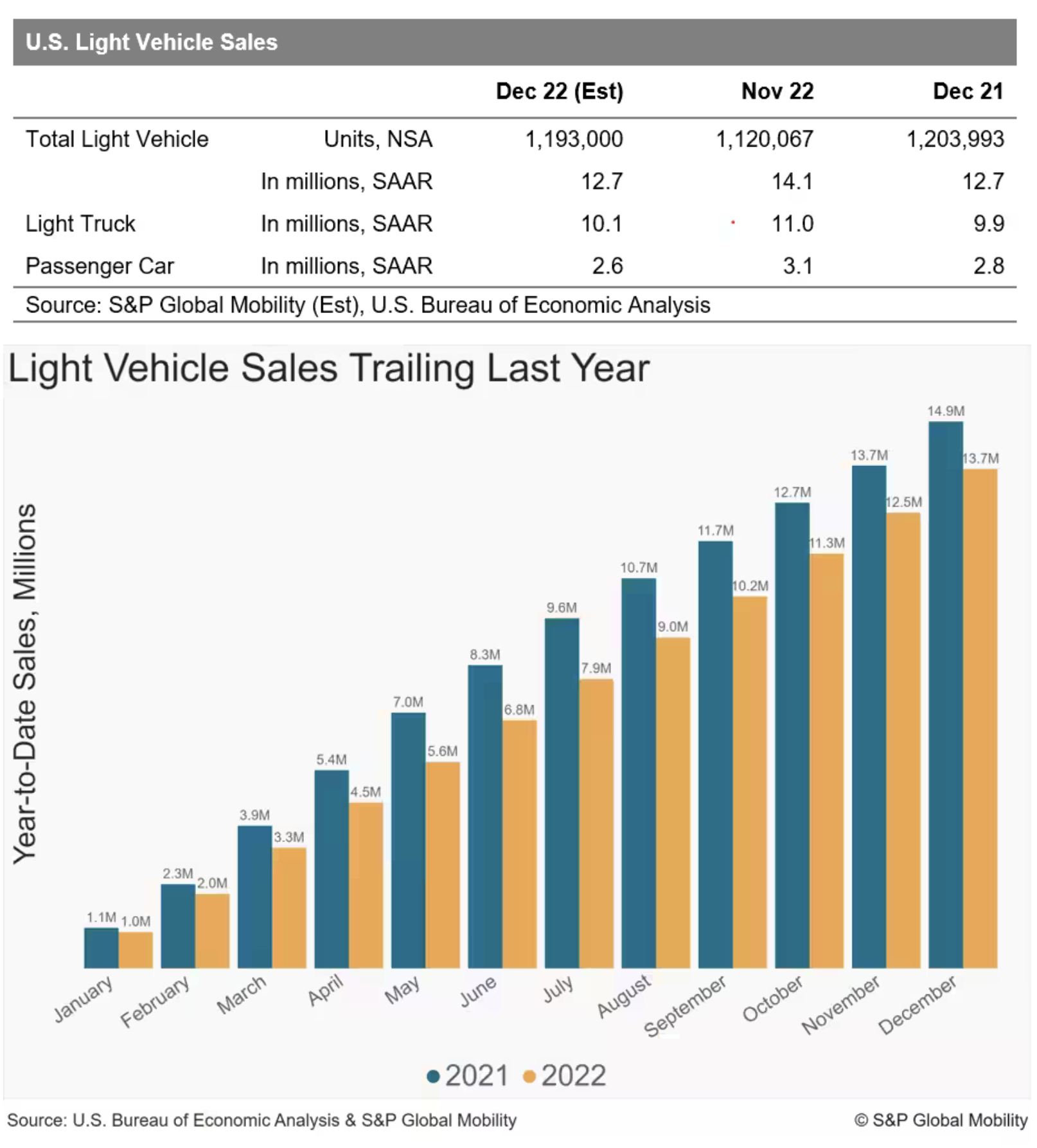It’s a new year, but dealerships are faced with ongoing challenges that have spilled over from 2022. With limited inventory and few OEM incentives, dealers need to rethink how they approach their marketing efforts to maximize available opportunities in 2023.
December’s monthly projected sales volume of 1.19 million units set a familiar tone for 2022, according to S&P Global Mobility reports. The SAAR reading would be the lowest for a month since May 2022, bringing the full year’s U.S. light vehicle sales total to 13.8%, an 8% decline from 2021.

Additionally, according to early S&P Global Mobility forecasts, U.S. sales volumes are expected to reach 14.8 million units in 2023, an estimated increase of 7% from 2022
“The U.S. auto market is struggling, impacted by supply chain, labor, logistics, inflation and wider economic concerns,” said Chris Hopson, manager, North American light vehicle sales forecast, S&P Global Mobility.
To engage new customers and retain their loyalty audience, it’s critical dealers keep their foot on the gas pedal when it comes to marketing efforts. But spray-and-pray marketing simply isn’t effective, so dealers must optimize efforts with a targeted approach.
This means marketing managers should focus on implementing marketing tactics that can successfully target their desired audiences. But where’s the best place to start?
Tip #1: Predictive Marketing
Technology is constantly transforming the way customers interact with dealerships, and tools powered by predictive analytics are quickly becoming key to maintaining efficient and effective internal and external dealership processes. These tools aren’t just becoming important for sales success – they’re becoming catalysts to dealership profitability. With tools and processes powered by predictive analytics, dealers are empowered to:
- Build a stronger team. No matter the time or place, connecting every department to work from the same information is key to dealership efficiency and success. By unifying customer insights dealership-wide to connect the dots between departments and align approaches, dealers can leverage predictive analytics to effectively build stronger teams.
- Do more with less. Predictive analytics can aid dealerships of all sizes in removing costly inefficiencies by automating tedious and manual processes, such as sifting through leads, targeting the best prospective customers and delivering personalized messaging at-scale.
- Simplify processes and operations. Advanced marketing tools help dealers simplify complex processes and operational challenges like balancing vehicle acquisitions and inventory strategies with sales and marketing operations. By providing a comprehensive view of who’s in-market and mapping these insights to a dealer’s available inventory and any inbound inventories, dealers can then prioritize and focus on their best sales opportunities, ultimately simplifying their sales process.
- Promote customer loyalty. By using dealership marketing technology that integrates with their CRM and DMS, dealers can proactively promote customer loyalty. This is done by automatically engaging customers at key relationship-building touchpoints, such as using conveniently timed and personalized service notifications and developing a positive connection with each household until they are ready to re-enter the market.
Tip #2: Customer Conquest Marketing


Another increasingly valuable source of conquest leads is the dealership service drive. According to research from S&P Global Mobility, customers are holding onto their vehicles longer than ever with the average age of light vehicles on the road reaching 12.2 years in 2022.
Not only does this aging fleet mean more repair orders, but research also finds service loyalty fuels sales loyalty, highlighting the importance of a dealership’s service-to-sales operations.
Tip #3: Service-to-Sales Drive Marketing
In addition to sourcing conquest customers, there are numerous revenue and sales opportunities within a dealership’s service drive, including proactively identifying prime vehicle acquisition opportunities.
Proactive dealers can mine their upcoming service appointments to identify and engage customers who represent their best future trade or service-to-sales opportunities. This includes customers who are out of warranty or over their lease mileage or could benefit from a lower monthly payment.
Taking this approach one step further, some dealers have reconfigured their BDC to dedicate one (or a small number) of their most tech-savvy team members to act as a service-to-sales liaison. This strategy enables service teams to efficiently identify proactive trade opportunities and engage prospects before they enter the service drive, setting the stage for an excellent buyback experience.
Amid ongoing inventory shortages, diminished customer loyalty and threatened demand, it’s critical dealers look for ways to maximize their marketing efforts in 2023. By taking a data-driven approach to dealership marketing, dealers will not only engage their best customers but also acquire profitable trades and fuel their service operations.
Did you enjoy this article? Please share your thoughts, comments, or questions regarding this topic by connecting with us at newsroom@cbtnews.com.
Be sure to follow us on Facebook, LinkedIn, and TikTok to stay up to date.
While you’re here, don’t forget to subscribe to our email newsletter for all the latest auto industry news from CBT News.



